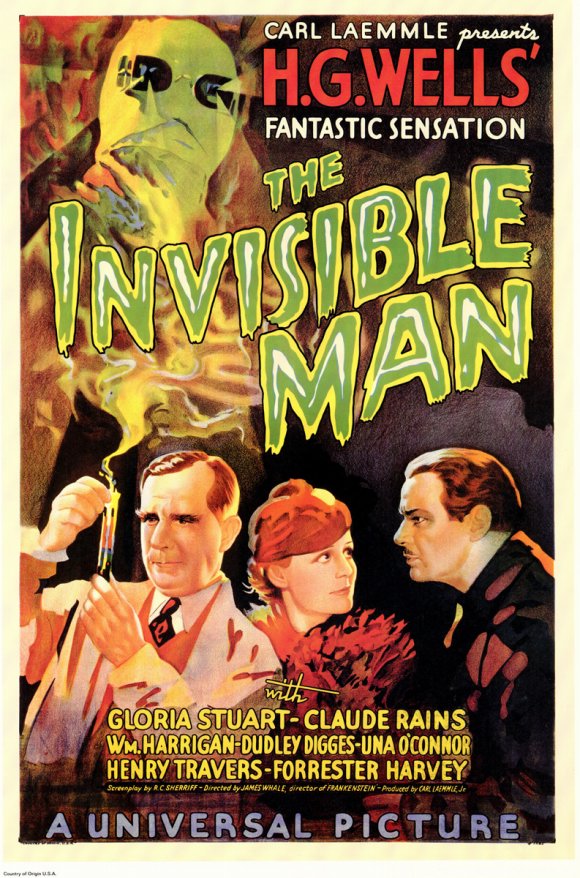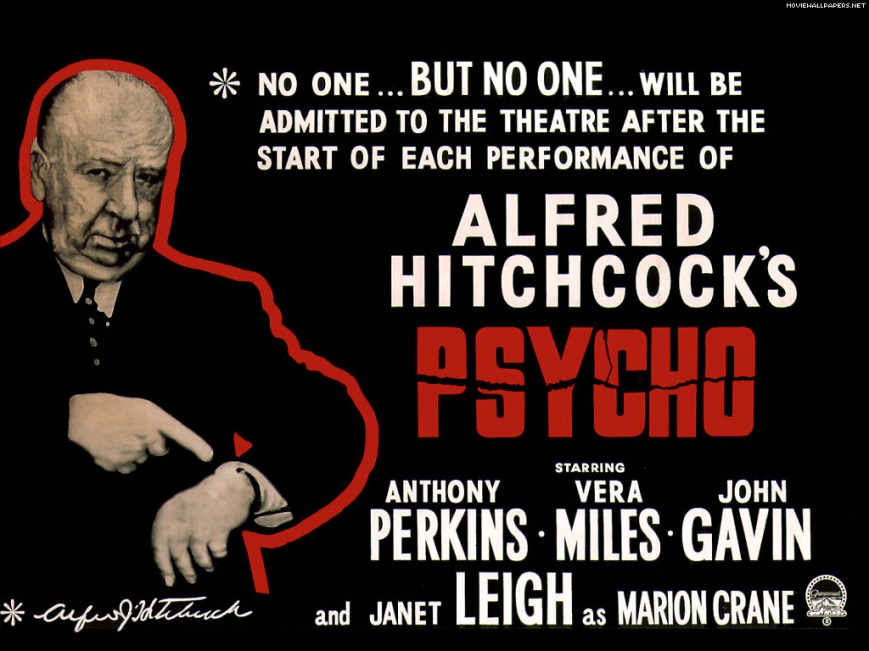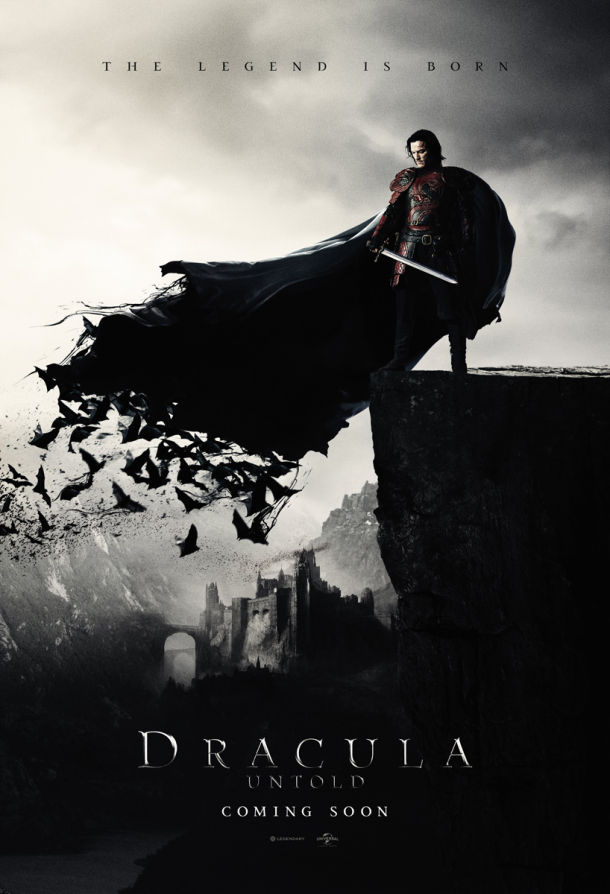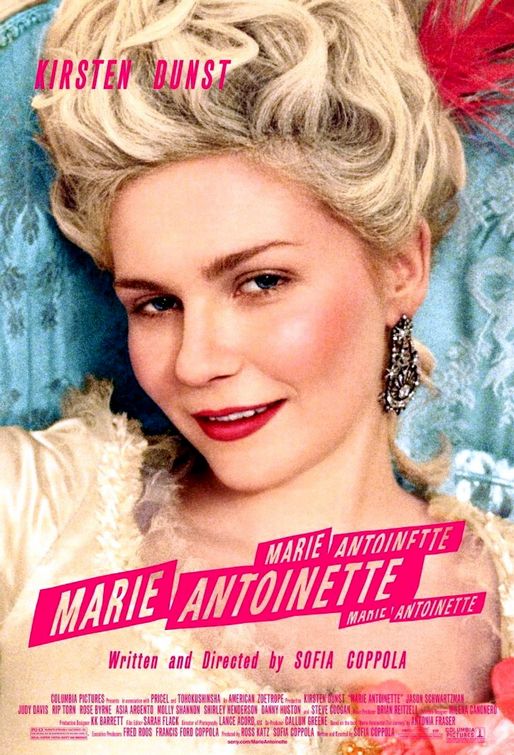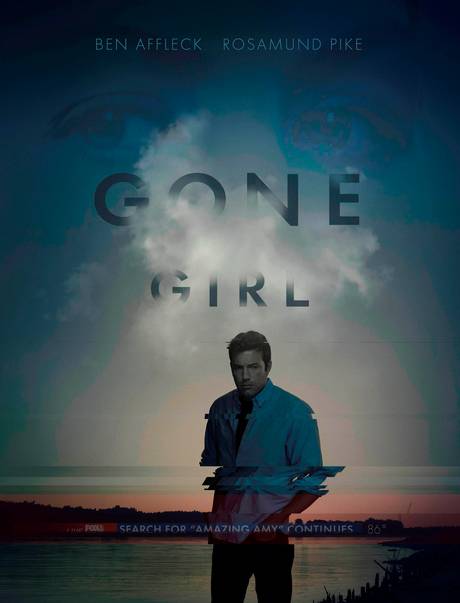1933’s THE INVISIBLE MAN
(What an incredible movie poster!)
Where viewed: DVD, couch, a can of Carling Black Label beer. (It’s not good beer.)
Experience with film: I have a nostalgic love for the Universal monster movies. As a kid, I’d pair the actor with the monster before falling asleep. Lon Chaney is the Phantom of the Opera. Long Chaney Jr. is the Wolf Man. Boris Karloff is Frankenstein. Bela Lugosi is Dracula. And so on. I can’t remember why. Because kids are weird. Anyway, I hadn’t seen this one in a long long time.
Writer: R.C. Sherriff; based on the H.G. Wells novel.
Director: James Whale
Principal Actors: Claude Rains, Gloria Stuart, William Harrigan
Last week, my girlfriend and I tried to get through a distracted double feature of James Whale’s other monster movie smashes, 1931’s FRANKENSTEIN and 1935’s THE BRIDE OF FRANKENSTEIN. It didn’t go so well. Perhaps we didn’t give them a fair enough shake (the danger of home viewing). Or perhaps the pokey and fairly cheap-looking FRANKENSTEIN didn’t reflect my memory of the film, thus deflating the evening a bit (there isn’t even an Igor in it! The character’s name is Fritz). But my what a leap James Whale makes with THE INVISIBLE MAN, which came out just two years later. There’s no narrative waste in R.C. Sherriff’s script. No plodding origin story–the Invisible Man is already invisible and on the precipice of his rampage. And we get into the effects, violence, and black humor right away. That last bit, the dark humor, is what keeps the film from feeling dated. Propelled by the symphonic voice of Claude Rains (in his Hollywood debut) as an (often totally) invisible character, THE INVISIBLE MAN is grim, violent and maniacal fun. Driven mad by the chemical cocktail that’s rendered him invisible, the once respectable Dr. Jack Griffin devolves from swatting a lunch tray out of someone’s hand to murdering a policeman with a stool to launching a train off a cliff, killing a hundred people. But he also steals another cop’s pants and skips up the road in them–so there’s just a pair of trousers dancing around and singing nursery rhymes. He tweaks people’s noses. He throws hats into ponds. The Invisible Man is clearly mad, and probably evil, but he’s joyful and rageful and confident. He’s having a damn good time. A seductive villain. An anti-hero that, if you removed the camp and fun-ness and made him “gritty”, would fit in with the Sons of Breaking Bad Walking Mad Men roster of nu-golden era TV protagonists. He’s such a likably unlikable guy. There’s a moment toward the end when the Invisible Man kills his former partner by tying him up and pushing his car off a cliff. And I was rooting for it. Get that disloyal cowardly sucker! Then I realized how pulled into the story I was, how the movie had twisted me up as only movies can. The Invisible Man had broken into his partner’s house, forced him to become an accomplice to murder and mayhem on the threat of death, and then when his partner had the gall to call the police, the Invisible Man pursued an irritational vendetta against him. And I was cheering it on! Because it was fun. The film sits at this rare nexus of lightweight/savage/humorous/heavy/hopeful/nihilistic that rests somewhere under the umbrella of “dark humor”. In order to get to this rare place, everyone has be on board, the creatives and the technicians, with making the same movie because the target is so small. Either that or it’s just a wonderful thrilling accident.
